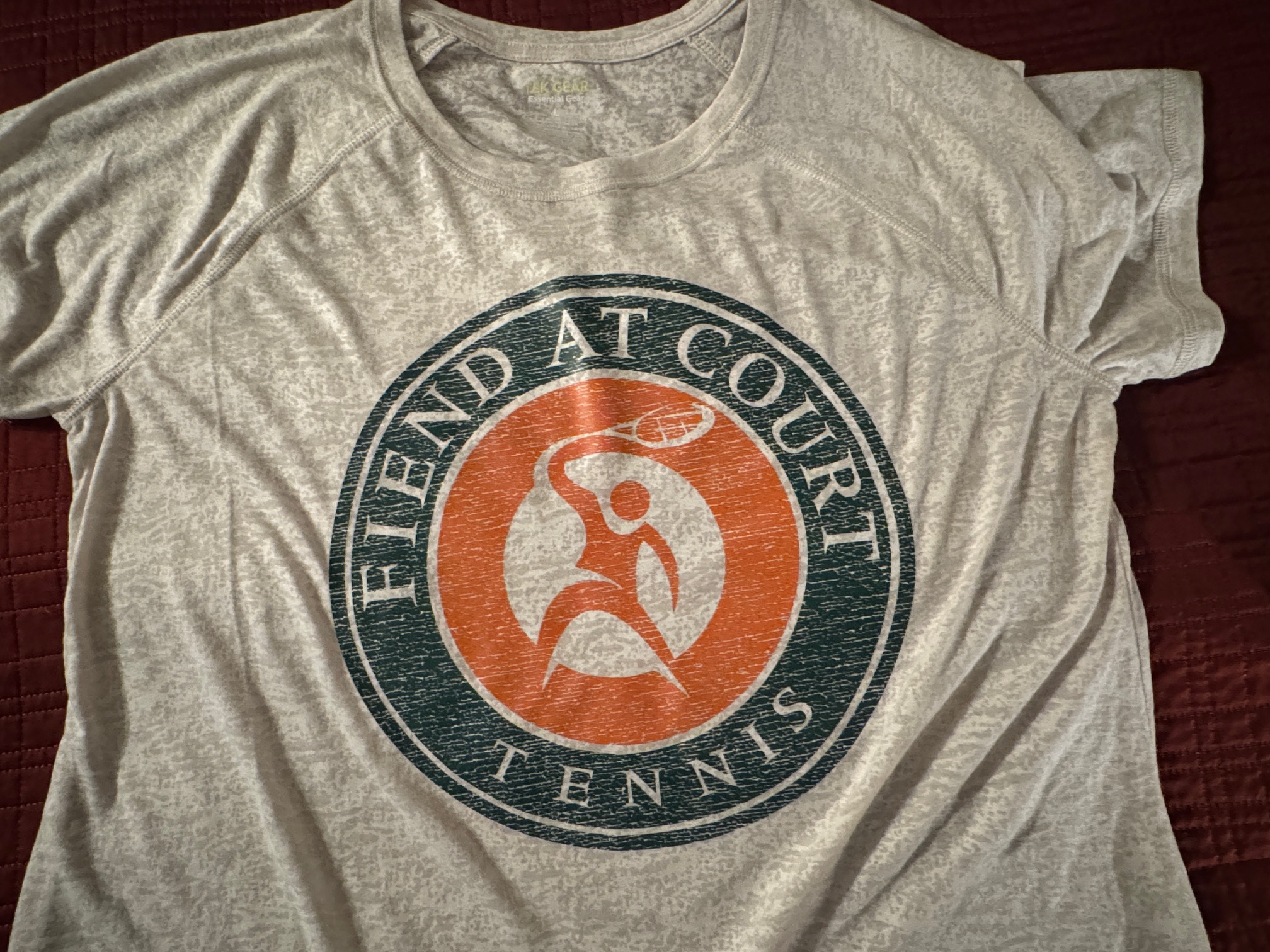Fiend at Court Unplugged
I am not originally from the DFW area. I was born and raised in Wichita Falls, Texas. Every once in a while, as I contemplate my options as I near retirement from my day job, the idea pops into my head to consider moving back to my childhood hometown. The complete absence of organized adult competitive tennis always quickly dispatches that option. I simply cannot live in a tennis wasteland.
Knowing my hometown as I do, there is a good possibility that someone from Wichita Falls will come across this post and be morally offended to hear their town described as a tennis wasteland. I will make no apology to anyone who disagrees with that characterization. Prove me wrong. Reinvigorate the Wichita Falls Tennis Association and the city back into the tennis hotbed that it used to be. Organize a league. Host a tournament. I will come and play it.
I have a pretty broad definition of a tennis wasteland, but essentially it boils down to areas that do not have enough players for viable league play at or above the NTRP 4.0 level. There are many parts of the Texas Section that don’t even come close to that criteria. A tennis wasteland is an area that essentially can’t even field enough adult teams to qualify a team for Sectionals at most (if any) levels without arranging or participating in an area qualification tournament. It is an area where the player pool is not large enough to sustain competitive tennis.
As a case in point, last season some of the active tournament players Wichita Falls wanted to field a Tri-Level League team which requires computer rated players. They had to reach out of the area to find NTRP 3.5 players because it had been so long since leagues had been conducted that there were simply were no local computer rated players at that level. The pipeline is dry and that is a shame.
In a way, geography conspires against some of the tennis wastelands of Texas. At some point population density is a factor, because a certain number of people are required to develop viable tennis facilities and leagues. Tennis development in those areas has to be so good that a larger percentage of the population embraces tennis than in the more populous areas.
Since I have been riffing on the Texas Section 50 mile radius rule the last couple of days, naturally I drew another circle, which illustrates another geographic challenge faced by Wichita Falls. The USTA city center for Wichita Falls is a parking lot. (I would note that this definitely not a “paved paradise and put up a parking lot” situation.) I personally would like to petition to move the city center two blocks north to the McBride Land and Cattle Company steakhouse.
For clarity, I drew a little water into the Red River on the map first using the same shade of blue as the lakes. That didn’t provide enough contrast. I then spend an inordinate amount of time trying to figure out an alternate color that would stand out more. For the Red River. I am dense that way sometimes.
It it important for the Red River to be clear to show how much of the Wichita Falls 50 mile radius playing area is actually in another USTA Section. About a third of the circle for Wichita Falls is in Oklahoma, which is in the Missouri Valley USTA Section. I have no idea if players just over the border would even be permitted to play in USTA Texas Leagues. It is an academic exercise in any case because there isn’t a lot of organized USTA adult tennis being played in that part of Oklahoma either.
I am friends with players from Wichita Falls and other tennis wastelands through tournament tennis. When a player’s skill level exceeds the levels of available league play around them, the choice is to either quit tennis or embrace tournaments.
For the purpose of transparency, I have said this before and will reiterate this point again. I strongly prefer tournaments to league play. It is just the way that I am wired. At the same time, I recognize that league play is the lifeblood of getting many players engaged with competitive play at all. Both tournaments and leagues are complementary pieces in the tennis ecosystem. Damage to one also damages the other.
As USTA National works through the ongoing effort that re-imagines the structure of the organization to get closer to players at the local level, I am concerned that tournaments may be diminished in favor of league play. That would be a terrible thing to happen. Not only would it cut off the only viable paths to continue playing tennis for players in the wastelands, it would also negatively impact the available player pool for league play across the board.
Playing tennis should not be an urban privilege for the people who happen to live in or near the larger metropolitan areas. We need to rethink the engagement model for tennis to figure out a way to attract, retain, and grow tennis participation in all parts of the section. At a minimum the rules and regulations that define playing opportunities should not be tailored to the big city experience at the expense of the less populous areas.





I am enjoying your writings. My little town, Rockport, TX was also a hotbed for tennis–some 40 years ago. Now there’s only a handful of players. The younger ones are not interested in tennis. I was of the age and loved senior tennis tournaments. I have played some league play, but, it is not the same. I am still playing a bit of tennis, at 86 years old. Our tennis courts have dwindle also.
Thank you.